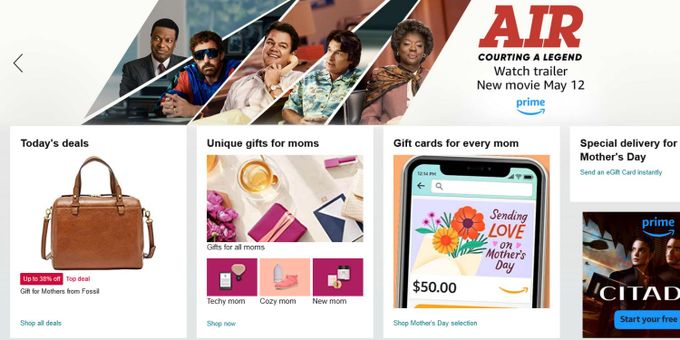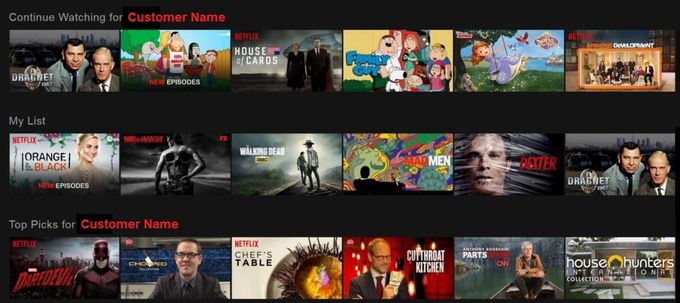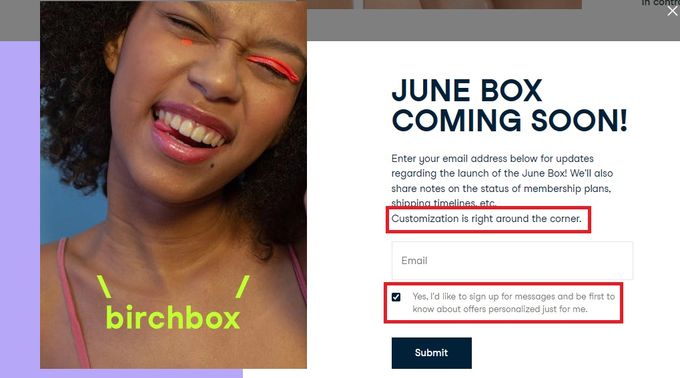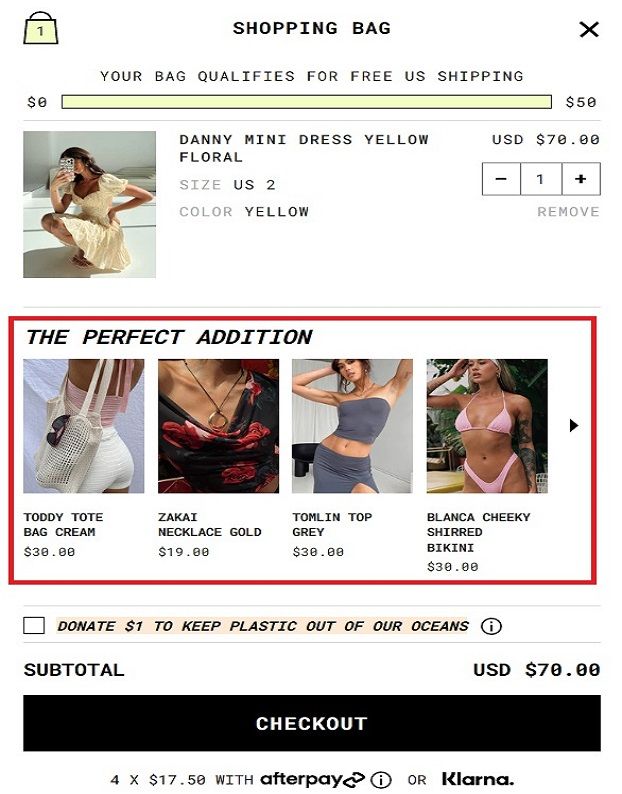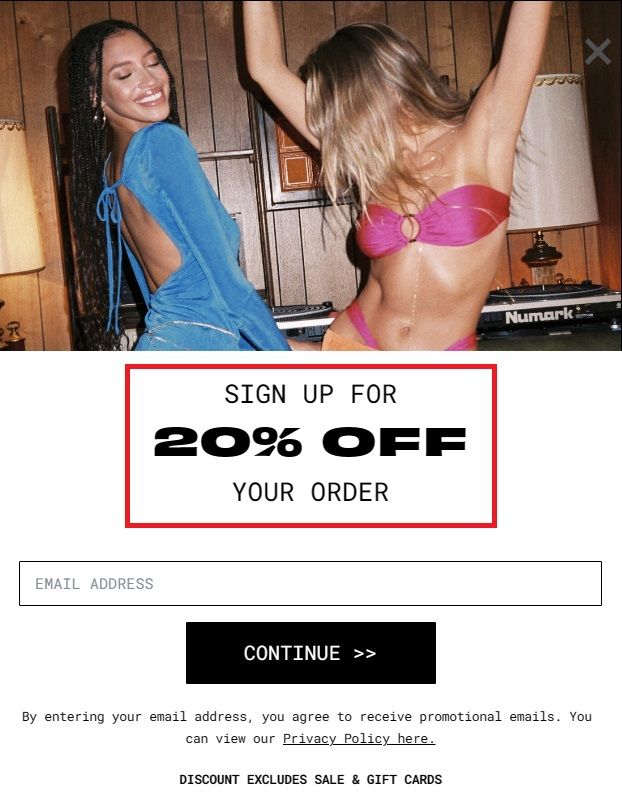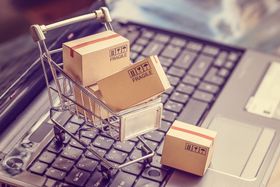5 Elements You Should Personalize in Your eCommerce Store (+ Examples)
Updated December 15, 2025

In today's eCommerce landscape, personalization is no longer a luxury but a necessity. By personalizing your eCommerce store, up to are more likely to buy. But you need to make sure you personalize the right parts of your customers' online shopping experience for it to be effective.
In this post, we'll explore the top 5 elements (with examples) you should personalize in your eCommerce store.
5 Elements to Personalize in Your eCommerce Store
- Homepage
- Product recommendations
- Email marketing
- Customer account page
- Checkout process
1. Homepage
Your homepage is the first thing your customers see when they visit your website. It's your storefront; it needs to be inviting, engaging, and tailored to your customers' needs. That's where personalization comes in.
A personalized homepage is essential for your eCommerce business. Here, you can showcase products and content relevant to your customers, increasing the likelihood of them making a purchase. Enhanced site navigation improves the customer experience.
Amazon: Bringing Personalization Home
One of the best examples of a personalized homepage is Amazon. By using customer browsing and purchase history, Amazon offers every individual customer a personalized experience. This makes it easier for customers to find what they're looking for.
For example, the non-personalized homepage contains general content: banners for newly released movies, daily deals, and suggested gifts for Mother's Day. None of these offers are tailored to the customer.
But the personalized homepage encourages the customer to "pick up where [they] left off", "keep shopping", or "buy again". The customer can easily complete their purchase or repeat it without starting their shopping journey over.
Not Personalized
Personalized
» Does your homepage need more refinement? Follow these best practices for promotions on your homepage
2. Product Recommendations
Personalized product recommendations are a great way to enhance your customers' shopping experience and increase sales—they can make up 31% of your revenue. By using customer browsing and purchase history, you can tailor products to your customers' needs and preferences.
This way, you also create upsell and cross-sell opportunities because your customers may discover new products they would've otherwise overlooked. For example:
- Use their recent search history: If a customer has been searching for running shoes, recommend running accessories or clothing.
- Use their purchase behavior: If a customer has been purchasing skincare products for acne, recommend a relevant skincare product that's recently been added to your store.
Netflix: Personal Recommendations For You
Netflix uses customer data such as viewing history, search history, and even time of day to recommend personalized content to their customers. This includes suggesting top picks for each customer, encouraging customers to finish watching content, and allowing customers to compile their own lists of their favorite movies and shows for easy reference.
3. Email Marketing
Email marketing is a powerful tool to connect with your customers and drive sales, but a generic email blast to your entire email list may not be effective. Instead, personalized emails get more engagement because they feel more relevant and personal to the customer.
Emails with personalized subject lines have open rates 20% higher than those with generic or static subject lines. You can use customer data such as browsing and purchase history, preferences, and behavior to create personalized email campaigns.
For example:
- Send personalized product recommendations based on a customer's browsing or purchase history.
Birchbox: Personalized Communication From the Start
Birchbox takes personalization very seriously. In fact, they've built their business philosophy on it by putting customers in control of what they receive in their beauty box. This also extends to their email campaigns. Birchbox emphasizes personalized communication already from their signup form to collect customer emails.
» Learn how to improve your personalized email marketing with AI
4. Customer Account Page
The customer account page is an important touchpoint in the customer journey. This is where customers can manage their orders, view their purchase history, and update their personal information.
This page is all about the customer, so you can improve their user experience and increase their loyalty by personalizing its content with relevant product recommendations, insightful social proof, and custom rewards or discounts.
Sephora: Accounting for Personalized Customer Experiences
Sephora has a rewards program called Beauty Insider. One of its perks includes receiving a free beauty gift of your choice (as opposed to a general gift chosen by Sephora) plus free shipping. During your birthday month, a banner will appear on your account page to remind you to choose your gift.
5. Checkout Process
The checkout process is the final step in the customer journey and can make or break a sale. Personalizing the checkout process can reduce cart abandonment and increase sales by providing a more convenient experience for your customer. For example:
- Reduce the time it takes your customer to checkout by offering the option to save their payment and shipping information.
- Personalize payment and shipping options according to the customer's location and preferences.
Princess Polly: Making Customers Feel Like Royalty
Princess Polly personalizes the checkout process for their customers at two points. Firstly, when you view your shopping cart (or "bag", as Princess Polly calls it), the store recommends additional products that will complement your purchase.
Secondly, you receive a personalized discount that you can either claim or reject. In this case, the store knows you're a new customer and haven't joined their mailing list yet, so you can claim 20% off your purchase by signing up.
» Explore more ways upsell and cross-sell personalization can benefit your eCommerce business
Do It the Fast Way
Personalization is crucial for your eCommerce business. It can have a significant impact on your customers' shopping experience and overall sales, but only if you personalize the right elements of your eCommerce store.
The key is to understand your customers and use their data to create relevant, personalized experiences that make them feel valued and appreciated. In turn, this can lead to building long-term customer relationships and repeat business.
» Review these top eCommerce websites to help you create exceptional customer experiences
